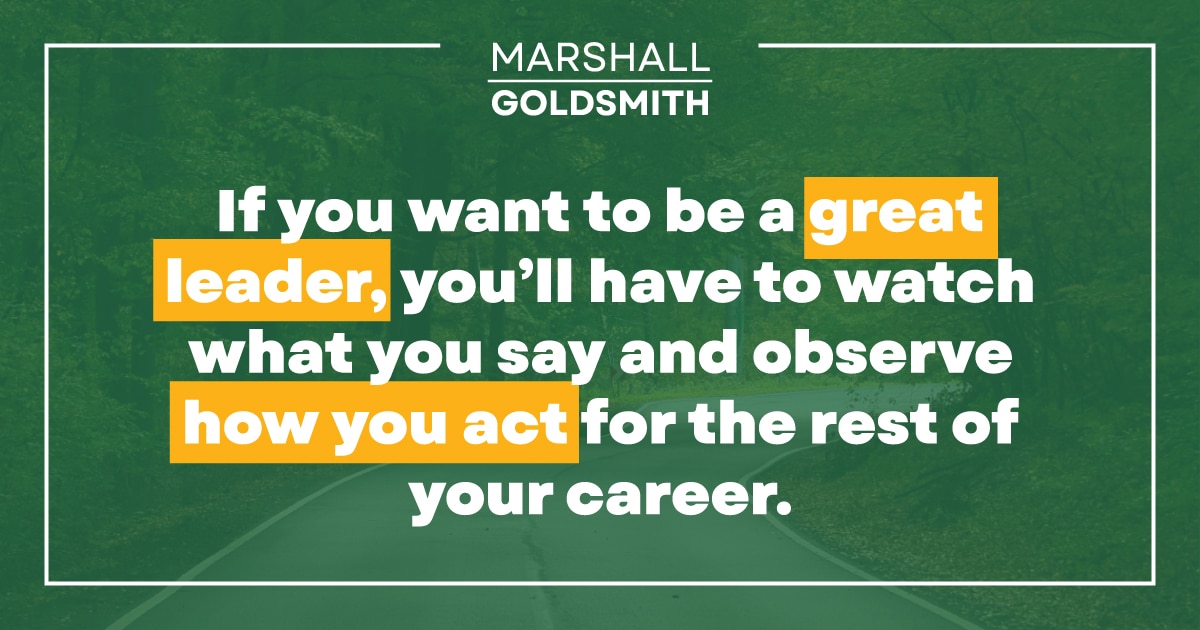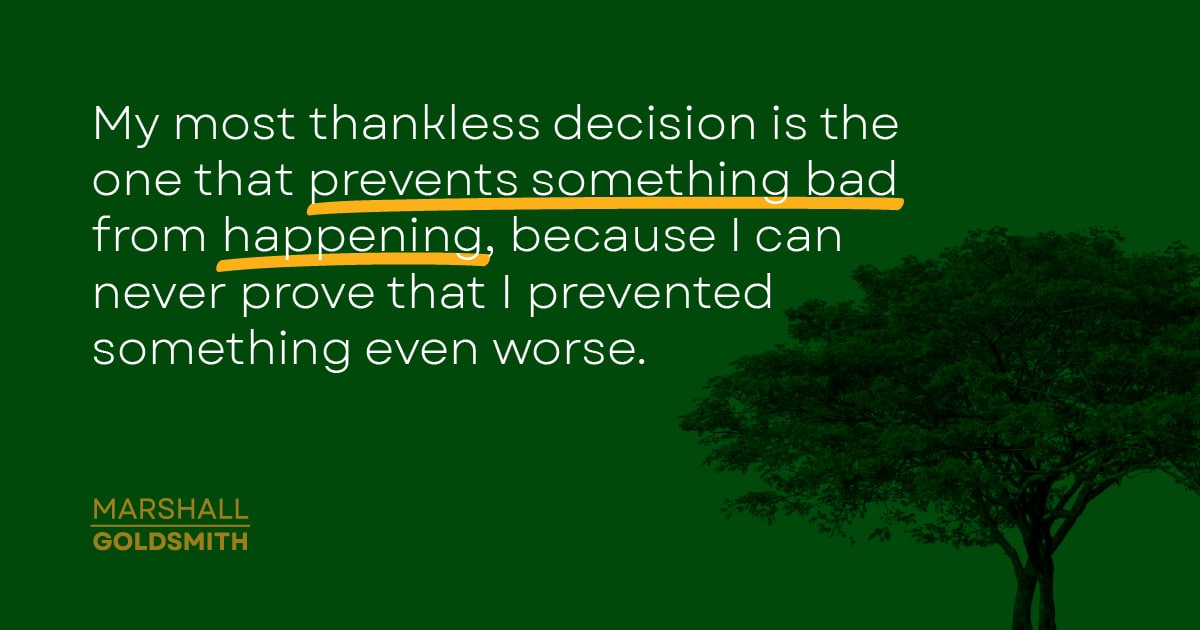Playing Favorites By Marshall Goldsmith There’s a reason I devote...
In this final part of my interview with Judith Glaser, Conversational Intelligence®, We-centric Leadership, Neuro-Innovation expert and Marshall Goldsmith 100 Coach winner, we talk about two mistakes that decision makers avoid when they disagree with their direct reports, which ultimately leads to better working relationships and greater success for the organization. Below is a short excerpt from our interview!
JG: Marshall, you have great advice about some of the most difficult situations. I’d love to your thoughts on how to handle disagreements when you are the ultimate decision-maker?
MG: Years ago, Peter Drucker taught me that “Every decision in life is made by the person who has the power to make the decision. Make peace with that.” This is great advice. How does it apply if you are the decision-maker? How do you disagree with your direct reports and request them to follow your decision without getting defensive, angry, or otherwise causing damage to the working relationship?
There are two mistakes that great leaders never make when they disagree.
Let’s take the following scenario to illustrate this point. Let’s imagine I want you to do X and you want to do Y. You explain your reasoning to me. I listen. I repeat what you have said to make sure we are in agreement. In this way, I avoid the mistake of not listening.
Now, let’s say I do not agree with you. The worst thing I can do is point out why I am right and you are wrong. This is mistake number two.
A far better approach is to say something like, “Direct report, I want you to do X for the following reasons. You have said you want to do Y. I’ve listened to you. I’ve repeated what you said and I see the logic of it. In this case, I still want you to do X for the following reasons.”
Perhaps my direct report still disagrees and wants to do X. I can say, “I understand. You’re a smart person and I respect you. In this case, this is my decision to make and we will go with Y.”
Perhaps you come back again and say, Marshall, “I think you’re wrong.” You know what I can say?

“I might be wrong. And to be honest, if I’m not wrong on this, I’m certainly going to be wrong sometime. Neither of us has a crystal ball. We’re both guessing at what’s going to happen in the future. You have one guess; I have a different guess. I’m not saying I am right or you are wrong. I respect you. You’ve made your point. I understand it. I’ve explained it back to you. I still want you to do this for the following reasons. Please give it your best shot. I would greatly appreciate it. Thank you!”
This is my best advice to leaders and decision makers when they need to address disagreements in the workplace. I hope this advice is helpful to you!
Triggers is a #1 New York Times and Wall Street Journal best-seller! Order it at Amazon. See The Marshall Goldsmith Thinkers50 Video Blog for more of this video series.

Adding Too Much Value Won’t Get You There By Marshall...
C-Suite Master Class: No, But, However By Marshall Goldsmith Continuing...
The Doerr Institute: Expanding the Market for Coaches By Marshall...
Making Leadership Development Part of the College Degree at Rice...
Sanyin Siang – Winner of the Thinkers50 Marshall Goldsmith Coaching...
Thinkers50 Marshall Goldsmith Distinguished Achievement Award in Coaching – Nominees...
Leading with Influence: What Is Influence360°? By Marshall Goldsmith Founder...
Are You a Dominator, Manipulator, Persuader or Influencer? By Marshall...
Leading with Influence: Redefining Modern Influence Part 2 By Marshall...
My mission is simple. I want to help successful people achieve positive, lasting change and behavior; for themselves, their people, and their teams. I want to help you make your life a little better. With four decades of experience helping top CEOs and executives overcome limiting beliefs and behaviors to achieve greater success, I don’t do this for fame and accolades. I do this because I love helping people!
As an executive educator and coach, I help people understand how our beliefs and the environments we operate in can trigger negative behaviors. Through simple and practical advice, I help people achieve and sustain positive behavioral change.